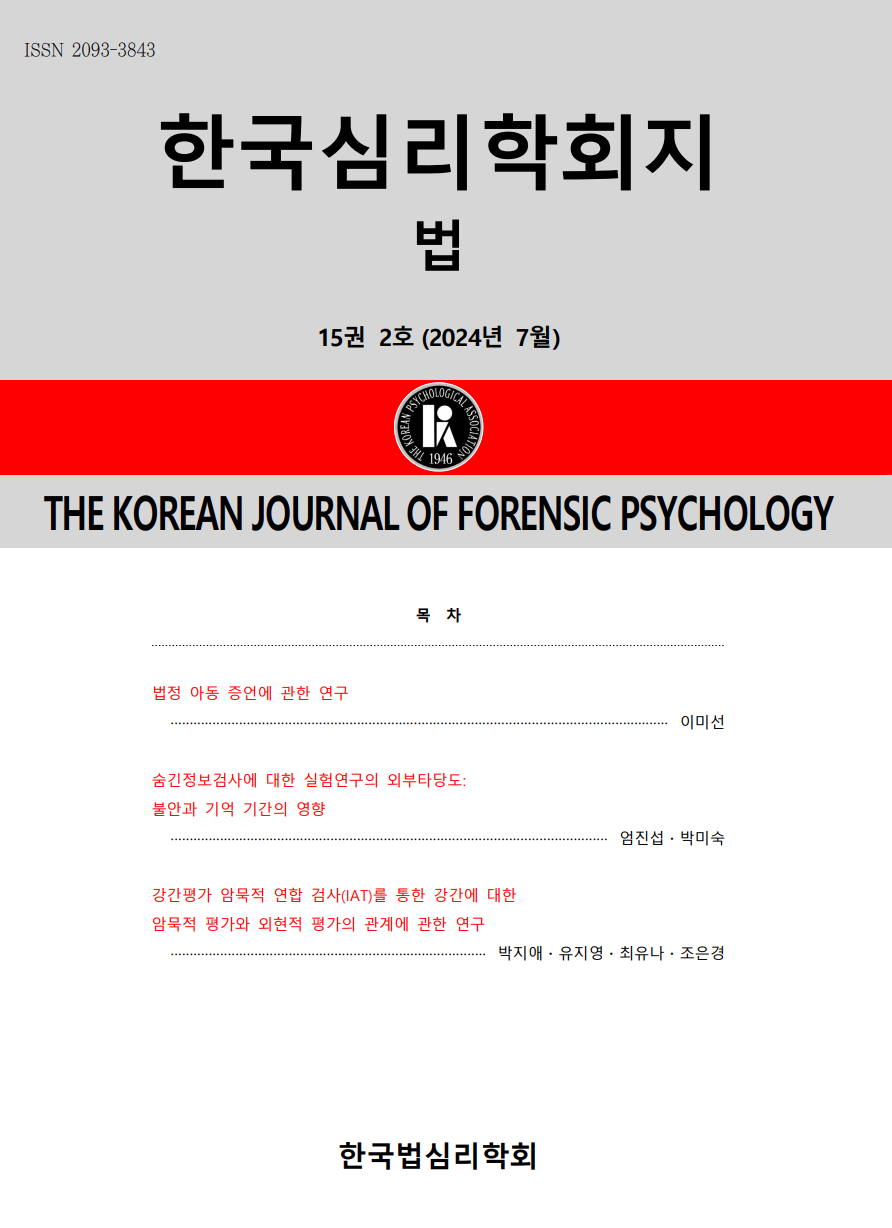open access
메뉴
open access
메뉴 ISSN : 2093-3843
ISSN : 2093-3843
Demand for statement analysis is increasing as the credibility of the victim's statement becomes more important in the investigation and trial of sexual offence cases. The consistency of the victim's statement is one of the main criteria for judging the credibility of a victim. In the era of 4th industrial revolution natural language processing technology is rapidly growing to analyze conversation contents. This study tried to verify the accuracy of statement consistency analysis using Triple+ extractions, a natural language processing technology. Trained evaluators conducted a statement consistency analysis on 57 actual transcripts of victim statements and compared them with the results of statement inconsistency analysis using Triple+. The Triple+ for 18 pairs of inconsistent sentences from victim statements were extracted and classified into 7 types of statement inconsistency. The rules of determining statement inconsistency for each type were established. The results showed that Triple+ correctly identified statement discrepancies 77% on the average. For subtypes of inconsistency classification accuracy varied as 100% for the direction, timing, and action, 75% for content denial, 66.7% for place, and 50% accuracy of event sequence and passive/active type were found. 93.8% accuracy was achieved in the judgment of 32 randomly selected pairs of consistent sentences. The results of this study suggest a potential for automatic statement inconsistency discrimination using Triple+ as supplementary tool for human expert statement analysis. The limitations of the existing natural language processing technology required for artificial intelligence statement analysis and the direction of future research are discussed.